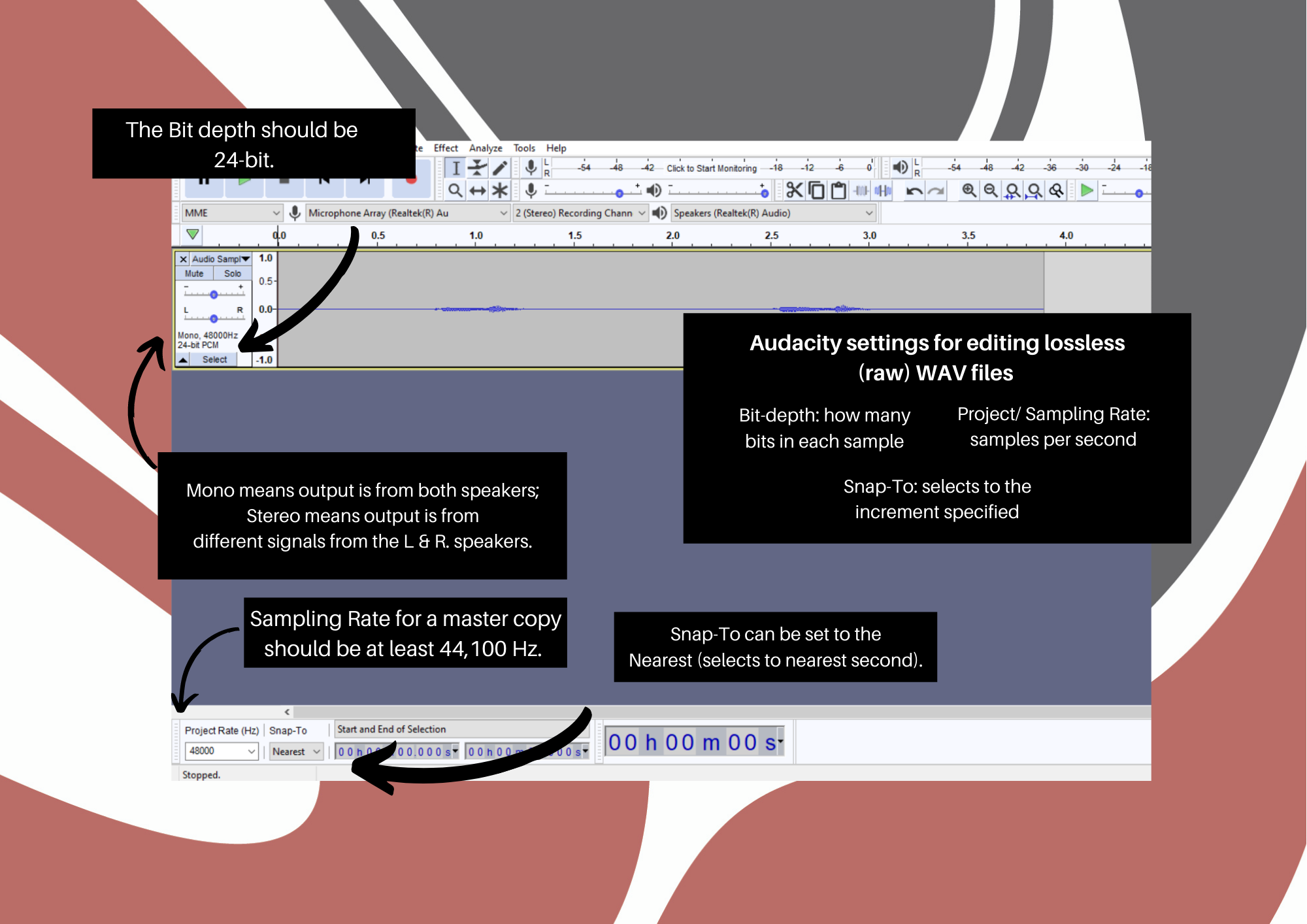This page will provide you insights on some of the recommended settings and standards to use when recording and editing in Audacity for optimal audio quality.
Audacity is a sound recording and editing software that is used by musicians, multi-media artists, and also language revitalizationists. The following information includes suggestions on how to best configure this software for your Digitization (DiGI) project's needs and store edited files on your desktop afterward.
In this module, you will find a refresher on what many of the settings and specifics in Audacity actually mean like 'Sample Rate' and how they relate to DiGI technicians in practice.
There are also videos that will aid in learning how to segment audio and organize your files after editing.
For more information on frequent terminology often encountered in your DiGI project, please find the FPCC DiGI team's living glossary: Glossary of Digitization Terms
For more information on downloading and installing Audacity, please see Module 5: Installing Audacity and MetaEdit in the DiGI training series.
Link to Interactive Module
Please follow this link to take you to the interactive module:
Digitization has provided two resources for you to review on where many of the settings discussed in the modules are located in Audacity and a one-page summary of the modules' information to print and keep with you as needed during the DiGI process. These files are also downloadable and available within the modules themselves.
